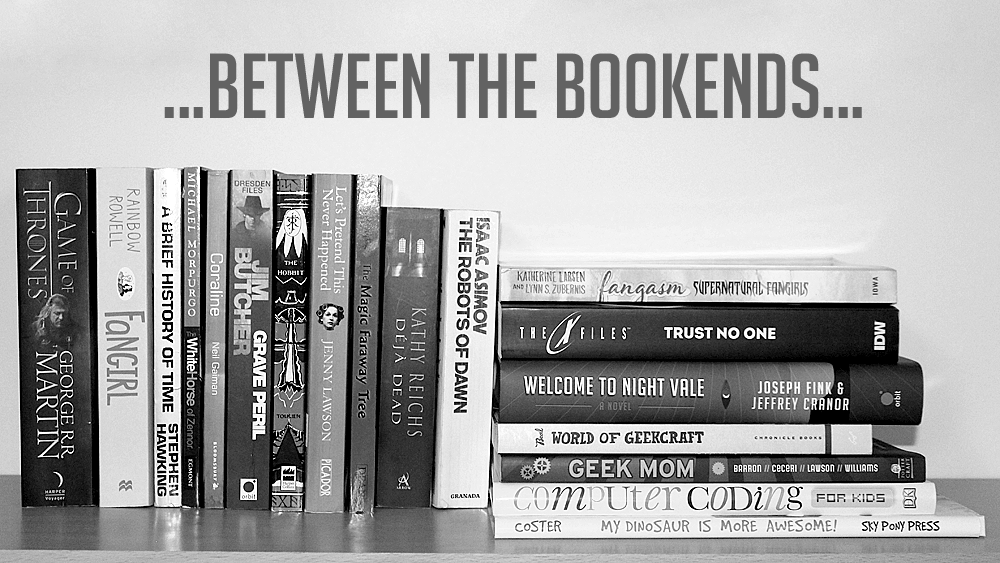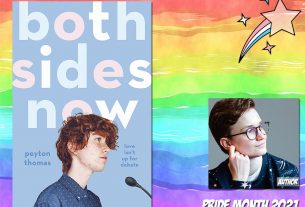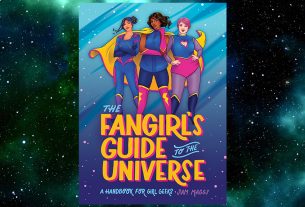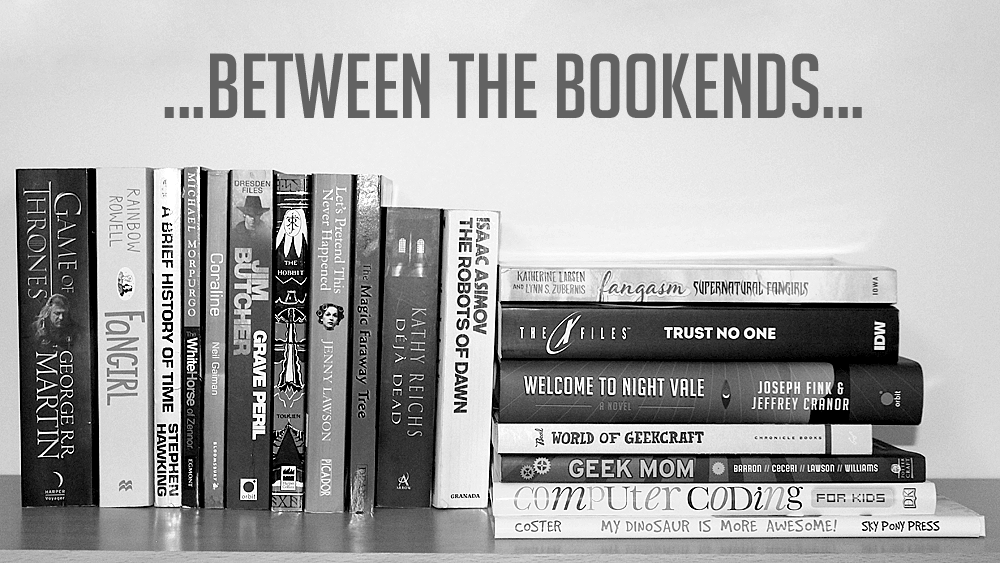
In this month’s Between the Bookends, Sophie, Lisa, Rebecca, and Missy share some of their favorite recent reads, from learning how to land a plane to an adventure in a magical re-imagining of the wild west.
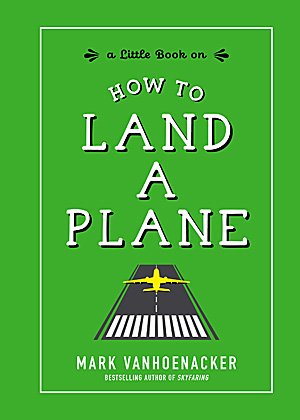
How to Land a Plane by Mark Vanhoenacker
Sophie isn’t a great flyer, although she does adore commercial aircraft and is a regular plane spotter; it’s just the whole actual being in the air bit that makes her a little nervous. That’s why she found the concept of Mark Vanhoenacker’s short book How to Land a Plane so interesting. It begins with the premise that you have suddenly found yourself in sole charge of landing the aircraft you are currently on board and attempts to talk you through the process.
Mark starts out by introducing you to the cabin, explaining the controls and instruments you’re going to see and which ones are the most important to use in this situation. He then talks you through simple, easy to follow procedures used by real pilots to assess difficult or unusual situations, getting you in touch with the people who will be able to help you, then guiding you through what crucial information to relay to them and where to find it. Sophie found the guide to understanding runway lights and markings particularly fascinating and has been watching videos shot from airplane cockpits to see them in action.
The whole book is written in a chatty, relaxed style. It’s almost like Bob Ross is talking you through the landing process. And, even though it’s obvious that the premise of this book is somewhat tongue-in-cheek (the likelihood of it ever being used by a real passenger suddenly needing to pilot down a 747 singlehandedly is almost nil) Sophie felt that by the end of it, she could actually enter a cockpit and have a reasonable idea of what she was looking at, how to make some basic corrections, and how to get help. Not bad for a 64-page book she read in its entirety during a single train journey.
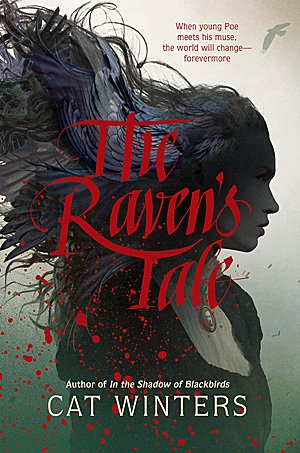
The Raven’s Tale by Cat Winters
Next up for Sophie was The Raven’s Tale which re-imagines a period during Edgar Allan Poe’s life when he moved out from Moldavia (the home of his adoptive parents), attends university, and finally publishes his first book. Poe is increasingly morose thanks to his priest and his borderline abusive step-father who demand he “silence [his] muse” and get down to serious business in order to avoid becoming a pauper and/or following in the footsteps of his dead parents, former actors whose artistic profession is looked down upon by his wealthy neighbors.
Only Poe’s muse doesn’t want to be silenced. Instead, she steps from the shadows in the physical form of a young woman whose visage horrifies neighbors and Edgar too, who fears her sudden appearance will prevent his escape from Moldavia. The book alternates from the perspectives of Poe and his muse – whom he names Lenore – and blends in lines from Poe’s real works as Lenore inspires him to write despite his fears and her confusion as she remains in a physical body, unable to transform into the spirit being form other muses take on rapidly after manifesting.
The Raven’s Tale seems to exist in a somewhat fantastical version of reality. Nobody appears surprised that Poe’s muse is a physical being with whom they can interact, they are only struck by her strange appearance. Indeed, it seems that many of the people Poe meets have a physical muse of their own, suggesting this is a fairly commonplace situation in this world. Sophie found herself struggling to be fully swept away by Poe’s chapters, preferring instead Lenore’s point of view, especially her interactions with other muses.
As with all novels based on historical figures, this is a strange blend of the real and the fantastic, but it does a good job of following the real events of Poe’s life. Sophie wasn’t as taken with it as she had hoped to be (and felt it would have been better published closer to Halloween, rather than during the lightening nights of spring) but found it an easy and enjoyable enough story that encouraged her to read more of Poe’s work.
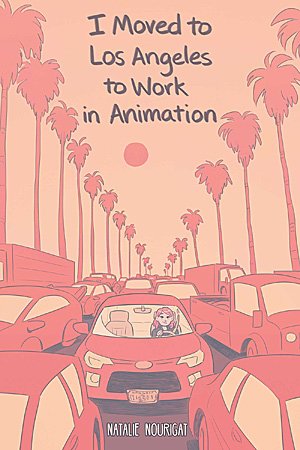
I Moved to Los Angeles to Work in Animation by Natalie Nourigat
This one-shot graphic novel which Sophie read next is explained perfectly and succinctly by its title. I Moved to Los Angeles to Work in Animation is an autobiographical graphic novel covering a period of several years in the author’s life when she moved from Portland to Los Angeles.
The book begins by explaining Nourigat’s decision to move. As with any major change, this is more complicated than a single reason and includes how Portland was changing with rents spiking and financial instability. The move was scary, but Nourigat explains how she made the decision to move before tackling the difficult processes of actually finding a job and searching for an affordable apartment. Later, there’s a ‘Day in the Life’ chapter and chapters on ‘The Best Things About Living in LA’ and ‘How to Break In’, plus a look at all the fun things Nourigat has enjoyed doing since moving. There’s also a look at the downsides of moving to LA (traffic, high rent, etc.) and an FAQ filled with the kind of questions you might have if you’re considering such a move.
The book is full of advice, from house-hunting tools to ideas on courses to take to boost your resume and whether to join a union. There’s also advice and comments from the author’s friends who went through similar processes but found results in a slightly different way. Sophie showed the book to a friend who had moved to LA a few years ago from Seattle and she agreed that all the advice given was helpful and well thought out.
Sophie imagines this book would be a godsend to anyone considering a move to LA as it is packed with incredibly useful information. If, like her, you have no intention whatsoever of making such a move (and don’t even work in animation or anything similar) then this is still worth picking up. While the LA and career-specific advice is unlikely to be useful to you, this is an engaging (and beautifully drawn) look at the lifestyle of someone in a really interesting career.

Noir by Christopher Moore
It was hard for Lisa not to read Noir by Christopher Moore without picturing everything in her head through a flickering black-and-white lens, which made it all that more fun to read.
Moore’s protagonists often tend to be lovable losers, so Lisa wasn’t sure how his take on a genre known for the hard-edged, hard-drinking, and hard-working private eyes like those featured in books from Dashiell Hammett, Dorothy B. Hughes, or Raymond Chandler was going to work.
Considering Moore’s writing never demands the reader take anything too seriously, it worked just fine. Instead of detective Sam Spade, there is Sammy “Two Toes” Tiffin, a bartender with “connections,” who encounters a cheesy (pun intended) dame named Stilton, as well as a general straight out of Roswell, New Mexico. Since this book is set in 1947, Moore had to toss is in an element of Roswell’s events from that era.
This book is filled with deliberate stereotypes, plenty of shout-outs to other noir classics, and line after line of snappy dialogue, the latter of which is by far the cleverest element about this story: “Chinatown is a mystery wrapped in an enigma, wrapped in a wonton, and fried.”
This worst thing about this book is it isn’t Lisa’s favorite book by Moore, and she really wanted it to be given her love of the classic noir genre. The storyline is all over the place and seems to wrap up a little too easily. Lisa figures this book was more of a practice in coming up with as many Cagney and Bogart era one-liners and imaginative characters as possible, than in actually trying to craft an easily followed plot line. Also, Sammy isn’t the only narrator, and that can be confusing at first.
For those who know and like Moore’s style, this might not live up to expectations, but those noir fans who just want to fun parody, wrapped in a little Men in Black alien-chasing (or it might have been a weather balloon), just relax and enjoy the read. This book served as a reminder to Lisa to suspend all disbelief and laugh a little, and there is plenty to laugh at in Noir.

An Easy Death by Charlaine Harris
Rebecca Angel has been a fan of Charlaine Harris for over a decade and was thrilled to read her latest book, An Easy Death. This is an adult fantasy/alternative history book set in Texoma in the early to mid-twentieth century. Texoma is its own country in what used to be America, but after the assassination of President Roosevelt, deadly diseases, plus the Great Depression, geopolitical lines shifted, leaving a fractured world where there is little law and order, “…this was the kind of thing that just happened because times were hard and people were weak and bad.”
Lizbeth Rose, nineteen, lives in Texoma where magic is acknowledged but mistrusted. She goes by Gunnie Rose because she works as a “gunner,” a person who protects groups traveling the dangerous roads with her expert shooting skills. “Only one man followed me out of Corbin, knowing I had money on me. I took care of him the afternoon of the first day. After that, it was an easy trip.” Lizbeth hates magic users, but when two wizards show up looking to hire a gunner, and she has no job prospects, she reluctantly accepts. It becomes her most dangerous assignment, roaming into other territories with their own rules, and the plot becomes personal for multiple reasons.
Although there is violence, death, and one rape in this book, Harris does not linger with much detail, just states it, and the remaining characters live with the repercussions. Lizbeth is a hardened killer, but she has a mother close by that loves her and she openly is caring to her friends. It is a tough world, but Lizbeth has no angst. Harris reveals the complexity of the plot with skill.
The book is a sexy thriller with 50% female speaking characters. It’s the Wild West again, with magic.

The Austen Playbook by Lucy Parker
Missy spent several excellent days re-reading Lucy Parker’s London Celebrities series in anticipation for the arrival of the latest book, The Austen Playbook. The series is a loosely related group of contemporary romances set in the London theater world. They’re not direct sequels, so it’s okay to jump in with the newest one, but the first three have conveniently been packaged in a single volume.
Like all of the books in the series, The Austen Playbook is fun and witty and charming. Freddy, a former child actress at a turning point in her career, and Griff, a theater critic who pulls no punches, are thrown together when Griff’s brother stages a televised play at the teetering-on-the-edge-of-financial-solvency family estate that Freddy is cast in. She’s a Hufflepuff; he’s a Slytherin; sparks fly.
(Sidenote about the show: it’s based on a game that throws all of Jane Austen’s characters into an Agatha Christie-like murder mystery, which sounds like a fabulous way to kill time on the train. Sadly, it, too, is fictional, but a girl can hope, right?)
Aside from the excellent banter and fun setting, the best part about the book is how both main characters are whole and functional before they fall into a relationship. No one needs to be fixed, but their lives are better when they’re together. Griff offers clear-eyed support; Freddy looks deeper into tangled relationships. There’s a bit of a mystery to sort out about their grandparents (who had a scandalous affair in their artistic heydays), and then some significant fall-out to deal with, but everyone emerges into a better place by the end of the book and (much, much, much) fun is had along the way.
GeekMom received some titles in this collection for review purposes.
